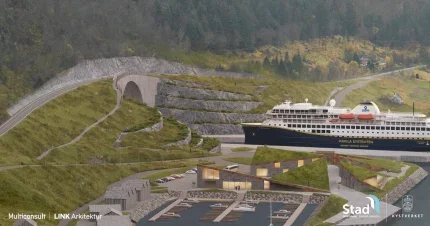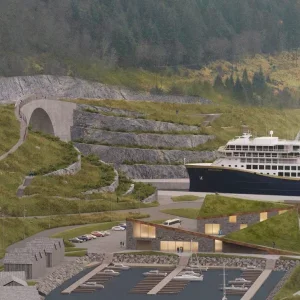
The Norwegian Coastal Administration is holding the final round of meetings with the bidders for the Stad Ship Tunnel this week ahead of the first bid deadline of June 10.
There are now three contractors competing for the project: Skanska Norge AS and Vassbakk & Stol joint venture; AF Gruppen Norge; and Eiffage Génie Civil.
Norwegian Coastal Administration project manager Harald Inge Johnsen said the NCA was fortunate to have three “strong and committed bidders”.
“They are challenging us on key aspects of the tender documents, which ultimately improves the project. I’m confident that we will end up with a capable contractor and a solid final product,” he said.
He added that the clarification meetings had provided valuable input to both the tender documents and the bidders’ planning for the execution phase.
“Our goal is to give the bidders the best possible foundation for preparing solid and realistic proposals. We have had a close and constructive dialogue and received valuable feedback and exchanges on topics such as excavation methods and choice of materials. There have also been suggestions for improvements to requirements and solutions – for instance, regarding the fender systems inside and outside the tunnel,” said Johnsen.
The contractors’ prices outlined in their first bids will impact on the project’s further progress. If they exceed the approved cost framework, a new budget will need to be approved by the Norwegian parliament. If they are within budget, the project will only require a start-up allocation in the national budget to begin construction.
Providing the bids are within the approved cost framework, the NCA plans to sign the contract in autumn this year and for construction to start next year.
The Stad Ship Tunnel aims to improve the navigability and safety of maritime transport around Stad, probably the most weather-exposed and dangerous stretch of sea along the Norwegian coast.
The tunnel will be constructed at the narrowest point of the Stad Peninsula, between the Moldefjord and Kjødepollen, in the Vanylvsfjord. It will be 1.7km long (2.2km including entrance areas), 50m high, and 36m wide.







